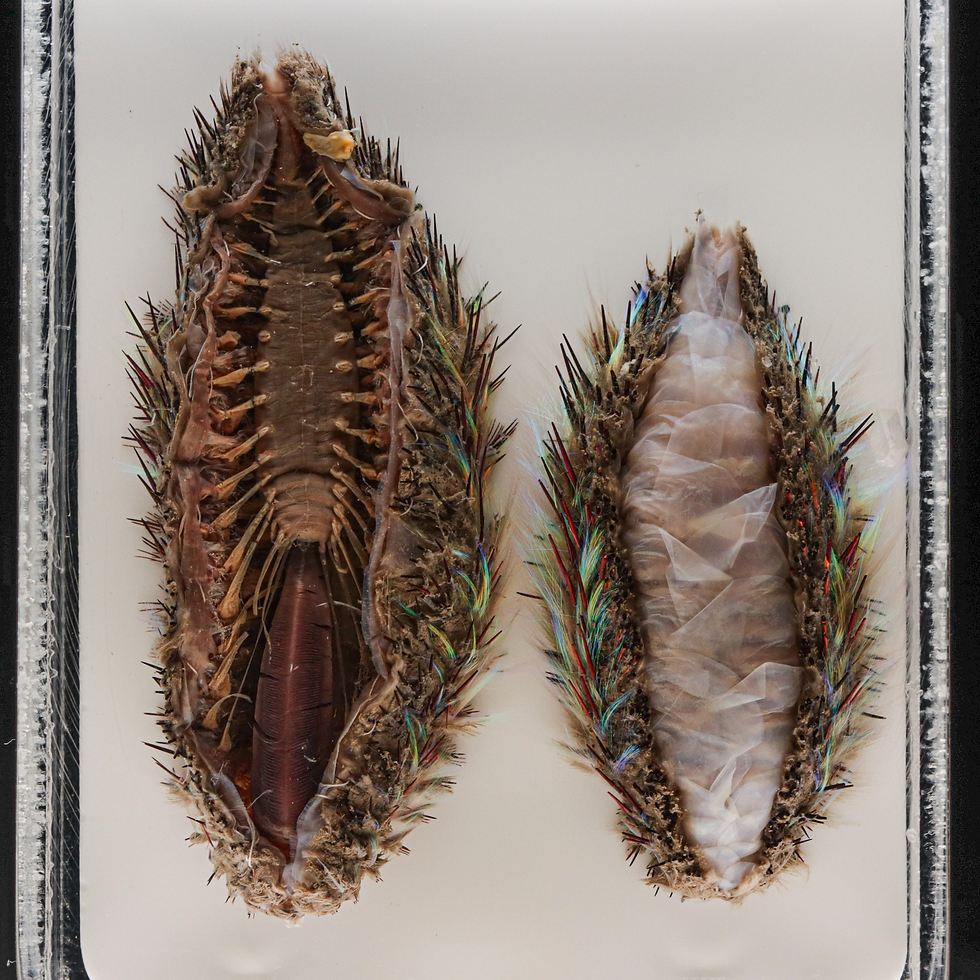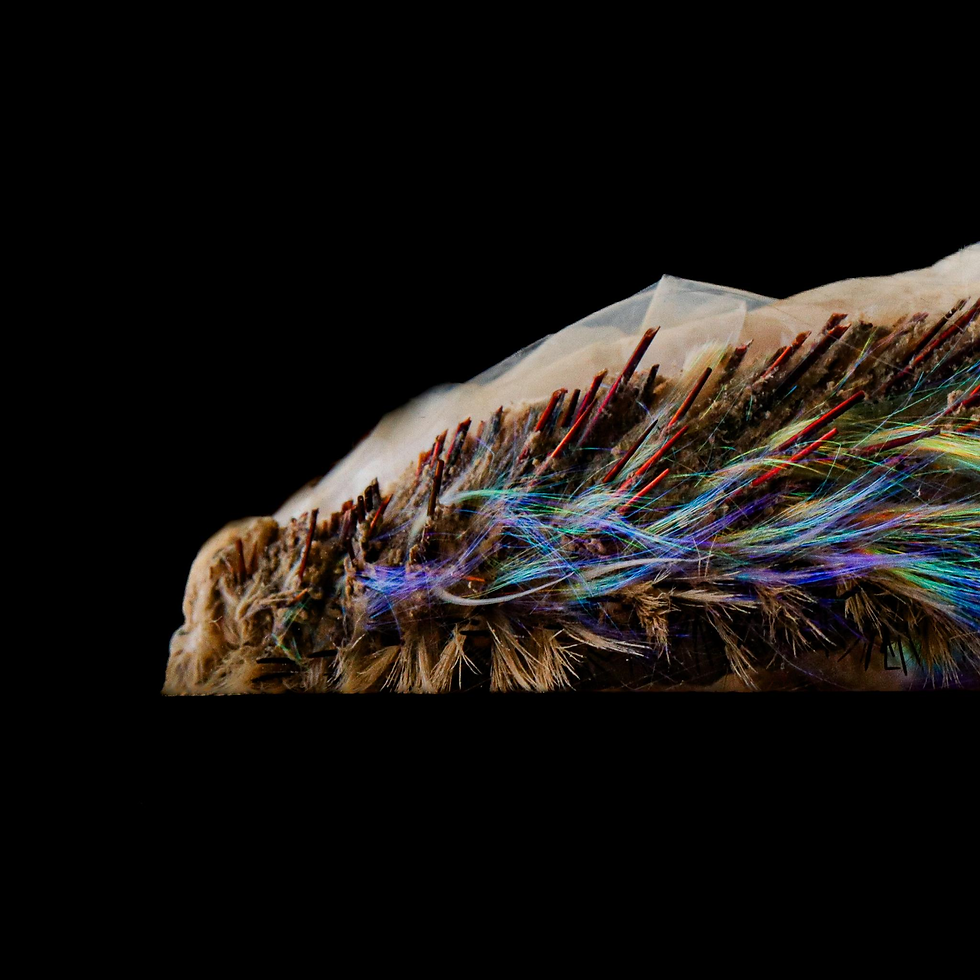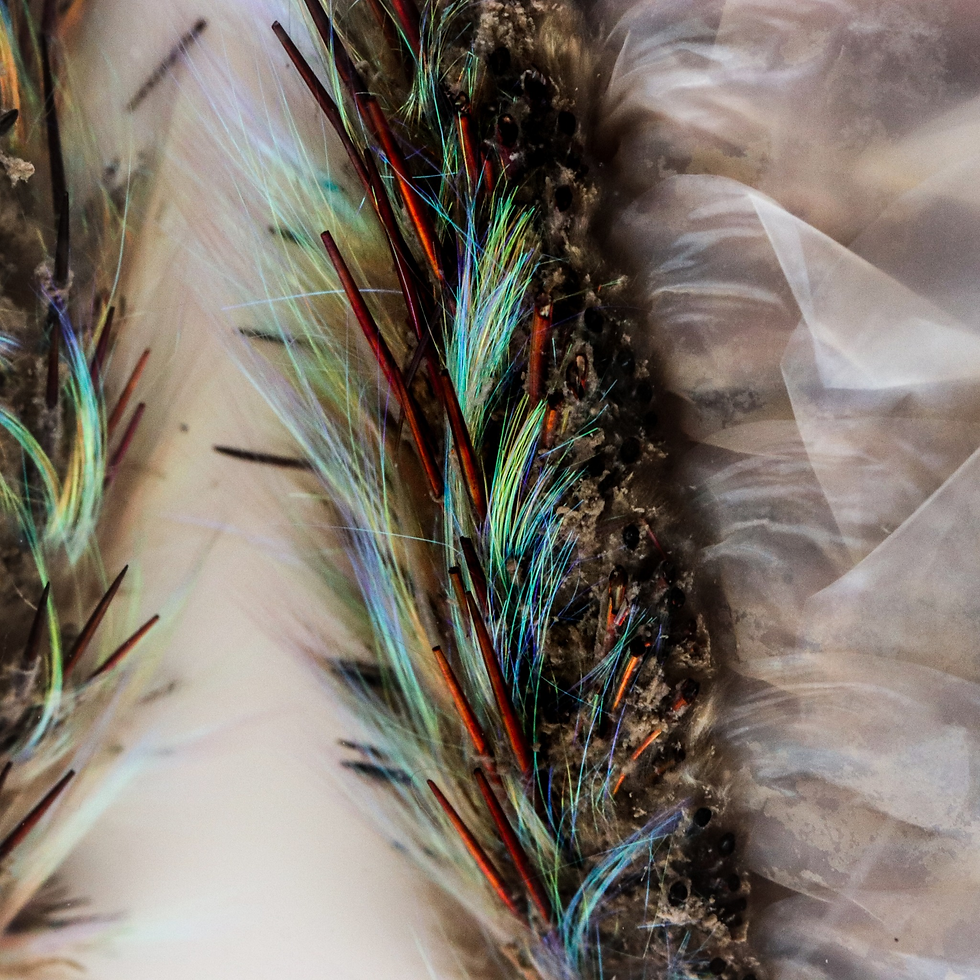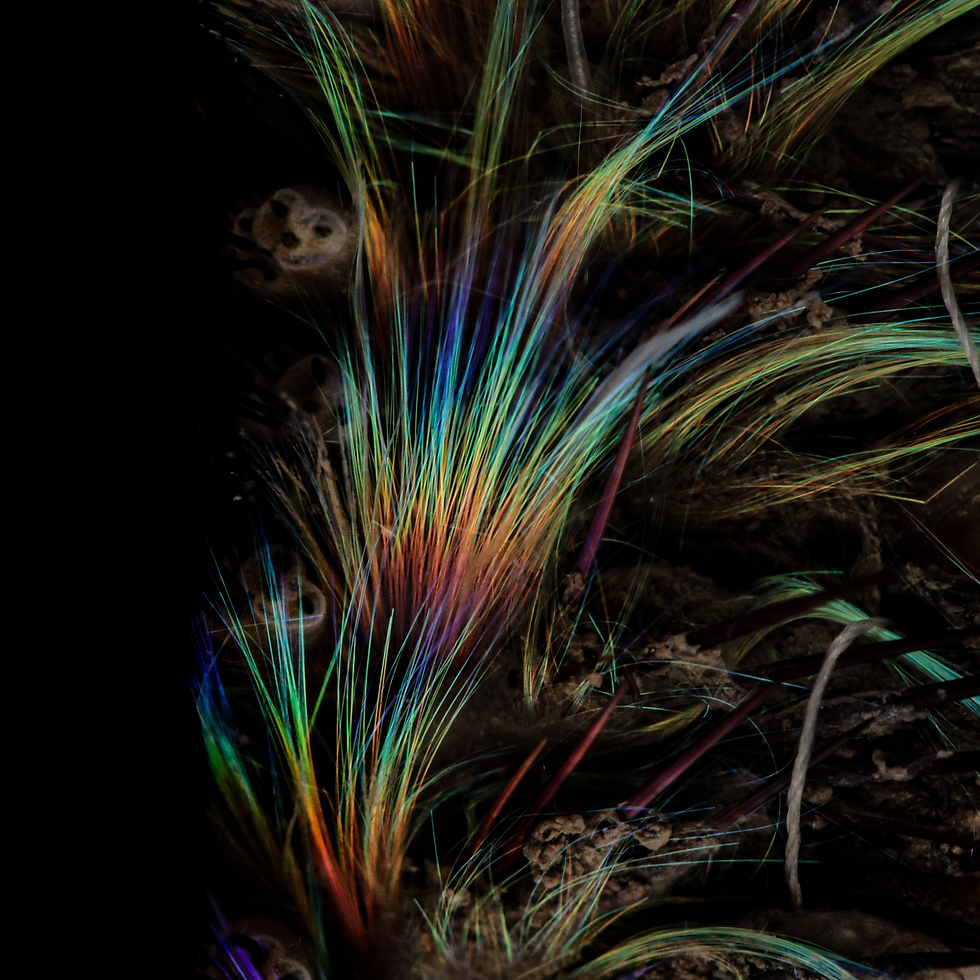Beneath the rolling waves of the Atlantic and the serene waters of the Mediterranean Sea🌊, a curious species thrives in the sandy or muddy seabeds near the shoreline. This enigmatic creature, the sea mouse (𝘈𝘱𝘩𝘳𝘰𝘥𝘪𝘵𝘢 𝘢𝘤𝘶𝘭𝘦𝘢𝘵𝘢 Linnaeus, 1758)🐛, is a marvel of the deep, boasting a dorsal surface cloaked in a dense, matted felt that shrouds its smooth, oval elytra. These elytra are not merely hair-like structures but are robust, protective plates that serve as a formidable shield 🛡️against the perils of the underwater world.

Yet, the intrigue of the sea mouse does not end there😎. Flip this creature over, and you'll discover its ventral side—a stark contrast with a flat, ridged texture, painted in shades of yellow-brown🌗. This underbelly is a treasure in itself, adorned with darkly pigmented papillae, which are tiny, fleshy outgrowths dotting its surface like the jewels of the sea💍.

This oval-bodied worm is 10-12 cm long and up to 6 cm wide📏.The sea mouse possesses an interesting appendage called parapodia🦵🏻, they are paired lateral extensions found on each segment of their body➡️. Just like you use a pole to push the punt boat through the water, the sea mouse propels themselves by swinging their parapodia, back and forth🛶. These tentacle-like parapodia are vital to contribute to the sea mouse's unique appearance and assist in its movements. The reproductive biology of this species is also worth exploring🔍! Sea mouse is dioecious, meaning it possesses separate sexes, individuals being either males or females👫🏻, which usually release eggs and sperm directly into the water💦. Mature females and males can be identified by sight👀, with distinctive ‘cream color eggs' visible through the thin walls of the parapodia in mature females, while mature males can be observed with milky fluid sperm in their main body cavity🤔.


Don’t get fooled by its name of sea mouse, as this little creature is a predator with a diverse menu😈, feasting on a variety of worms, young crabs and hermit crabs🦀. It is a bit of a night owl though when it comes to hunting🌛. The parapodia are used to dig through the sediments of the seabed at depths of up to 3,000 meters 🥶 in search of other worms, mollusks, and crustaceans. When it finds its prey, the sea mouse will first aim for its head📍 and uses its big mouth with incredible munching skills, defying the challenge of swallowing large prey, including king ragworms that can be three times its size 😱! It devoures them whole as they pass slowly into its intestine.

Sea mouse is not often seen therefore most of the sea mouse that wash ashore are either dead or, at best, lifeless ☠️, but if you see it in clear seawater, you may be able to see its true beauty✨. They can be recognized thanks to the presence of chaetae, which are hair-like structures. These ‘hairs’, however, aren’t hairs at all, but bundles of chitin, which is also the same material that gives shimmering to beetles. Chaetae show brilliant iridescence due to their fine and thread-like shapes, forming a lateral belt of iridescence around the sea mouse. The phenomenon known as pseudo-birefringence also occurs when sunlight ☀️ strikes the fluff-covered worm and produces a kaleidoscopic rainbow of colors🌈. The finer strands appear to be the source of this colorful flashing of blues, reds, greens, and yellows, while the thicker spines glow ember-red🤩. Giving the sea mouse a garish opulence that is unusual for a creature of the deep, therefore, the sharp colors also act as a warning to their predators and disturbance from us🚨.

So, next time you encounter the sea mouse, take a closer look at its matted felt, and the fascinating hairy tips ✨. It's truly a marvel of the marine world that you can also appreciate at the Hong Kong Biodiversity Museum😍!
Text : Macy Huen

Comments